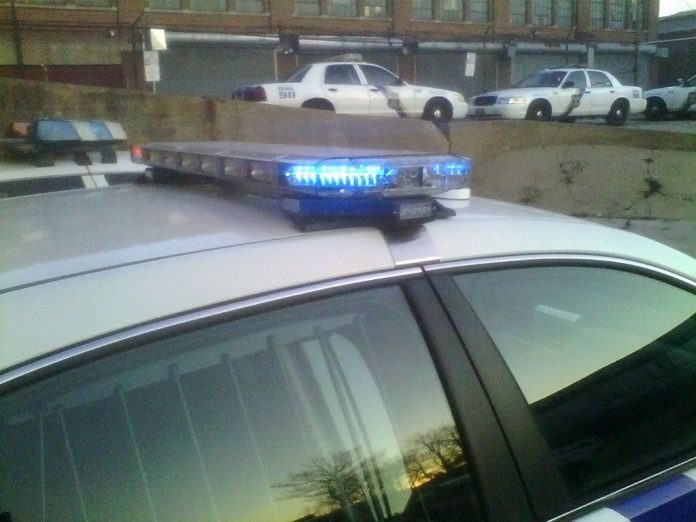In most places, police flash their red and blue lights at you when they want you to pull over or to get out of their way.
But in Philadelphia, certain police lights will soon signify something completely different. Basically, they’ll mean nothing in particular.
At Commissioner Charles Ramsey’s direction, the department is now modifying the light bars that sit atop hundreds of its marked patrol cars so that two lights — one red and one blue — will remain on whenever the vehicle is in use.
The lights will be on when the officer is driving around the neighborhood or stuck in traffic, and even when he’s sitting at a corner looking for scofflaws or sitting in a parking lot eating his lunch.
The commissioner believes that the lights will increase the visibility and public accessibility of officers while deterring overt criminal activity, according to a department spokesman. But many rank-and-file officers have countered Ramsey’s enthusiasm with skepticism, fearing that the shining beacons could actually blow their cover and aid criminals in the end.
“Almost every marked vehicle will have the red and blue lights,” said Lt. Ray Evers, the police department spokesman.
The lights are easily distinguishable from the ones used by officers in emergency situations, according to the spokesman. They are dimmer “auxiliary” lamps configured at the ends of the rooftop light bar. The red one is on the driver’s side and the blue one on the passenger’s side. The angled lenses are visible from the front, rear and sides of the car.
Unlike the emergency lights, they will not flash or rotate. They will remain static. There is no “off” switch.
“They’re for visibility, awareness and showing folks in the neighborhood that police are there,” Evers said.
Problem is, officers often don’t want to be seen or recognized, according to John McNesby, president of the Fraternal Order of Police’s Lodge 5.
“I’m thinking it could be dangerous for some of our cops in more active units,” the police union leader said.
“If you think [serious crooks] will run away because they see a light, you’re sorely mistaken. We’ve had officers in full uniform being fired upon getting out of their cars.”
One patrol officer who spoke to the Times on condition of anonymity reiterated the stealth concern. Many times, officers like to “roll up” quietly on individuals or groups suspected of criminal activity. That way, the officer has a better chance of catching the crook red-handed. Lights may compromise the element of surprise.
Similarly, the same patrol officer explained, officers often like to sit back in the shadows while observing a location. Or they follow a suspect’s vehicle slowly and undetected. These tactics work especially well at night. In either situation, lights may cause law-breakers to flee and perhaps commit crimes elsewhere.
“We believe visibility and awareness are more important,” Evers said. “We have to weigh it out.”
Another area of concern is how motorists will react to the lights. Initially, civilian drivers may be unfamiliar with them and may react as if there is a real emergency. In time, they might continue to pose problems for out-of-town drivers.
“Like anything else, after citizens get used to seeing it, they’ll recognize what it is,” Evers said. “You’ll know [it’s an emergency] when the full light bar is on and the audible siren is on.”
Ramsey launched a similar initiative in 2003 in Washington, D.C., when he was chief of police there. According to a Washington Post report from Jan. 25 that year, Ramsey got the idea from a trip to Israel. Police in Jerusalem were using a similar visibility tactic.
Ramsey reportedly told the Post: “I think we need to do more to be visible. Sometimes, we blend into the background. People just don’t know you’re there.”
Since arriving in Philadelphia in January 2008, the Chicago native consistently has advocated for greater visibility from his patrol officers. His recent predecessors often wore civilian clothes day-to-day and generally traveled in unmarked vehicles. But Ramsey usually wears his police uniform to work and drives a marked sport-utility vehicle with full police decals and numbering.
By 2007, shortly after Ramsey’s departure from D.C., at least some locals there had grown tired of the extra lights.
On one Internet blog, locals there complained that some officers used white lights, while others used red and blue, and others used no auxiliary lights at all.
Motorists described the lights as distracting to them and confusing to the district’s many tourist visitors. One driver reported that he saw a car sideswipe a parked vehicle while swerving to get out of the way of an officer who wasn’t on the way to an emergency.
Others in the blog praised the lights for the heightened sense of security they provide.
As a policy, the police department does not disclose deployment levels. According to McNesby, whose union has about 6,400 active members, there may be around 500 vehicles assigned to the department’s 21 patrol districts.
Not all the patrol cars will be converted, however. Those used for tactical assignments, like district-level narcotics investigations, will not have them, Evers said.
Also, the lights will appear only on cars with newer-model low-profile light bars. Many cars in the districts have older light bars that do not support the auxiliary lights, according to McNesby.
Vehicles will not be taken off the street for modification, Evers said. Instead, the changes will be made whenever the cars go into the shop for repairs or routine maintenance.
McNesby says he been getting many inquiries and complaints from union members about the initiative. Meanwhile, he believes that the department would be better off investing its efforts elsewhere.
“I think money could be invested in much better places, like buildings, cars and more cops on the street,” he said. “Some of our building have no heat or air conditioning and they have asbestos, but [the administration] is worried about light bars.” ••





